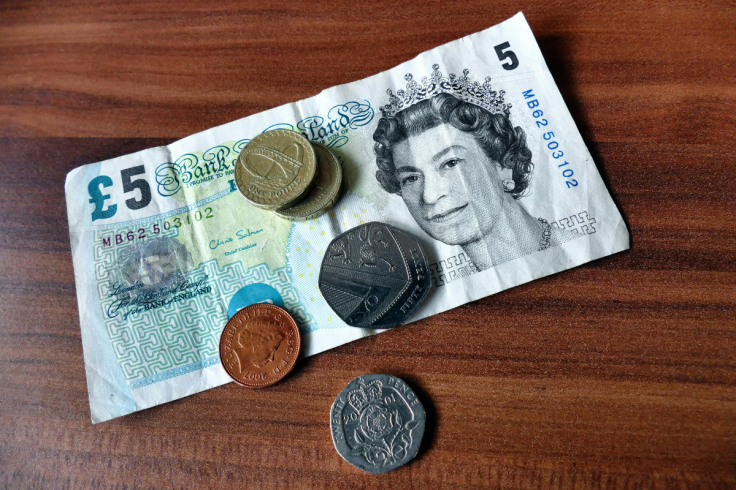Savings Tax Could Affect 300k Brits: Will You Be Deducted And How Much Will You Pay?
Pressure mounts on Reeves to balance public finances without further taxing savers.

A projected 300,000 additional savers in the UK could face taxes on their savings interest by 2025-26, driven by frozen income tax thresholds and rising interest rates, according to HMRC data.
As Chancellor Rachel Reeves navigates a strained economy, savers are urged to understand how these changes might impact their finances and what steps they can take to mitigate potential tax burdens.
Who Will Be Affected?
The surge in savers facing tax liabilities stems from fiscal drag, where frozen income tax thresholds pull more people into higher tax bands as their incomes rise with inflation.
HMRC estimates that 3.35 million people will pay tax on savings interest this year, up from 3.06 million in 2020-21, with an additional 893,000 savers expected to be taxed by 2028-29.
Basic-rate taxpayers, who face tax on savings interest exceeding the £1,000 ($1,340) Personal Savings Allowance, are particularly vulnerable.
Higher-rate taxpayers, with a £500 ($670) allowance, and additional-rate taxpayers, with no allowance, are also increasingly affected.
Laura Suter, director of personal finance at AJ Bell, told The Telegraph: 'What was once a tax affecting wealthier savers is now catching out everyday basic rate taxpayers.'
X posts from @BGatesIsaPyscho state, 'Labour are coming after your savings.'
🇬🇧 “They’re just coming after absolutely everything”
— Concerned Citizen (@BGatesIsaPyscho) May 21, 2025
Labour are coming after your savings
Despite paying tax on all your saved income - Labour now plan to tax your savings as well.
You will own nothing & be happy. pic.twitter.com/QKdIKDSY28
How Much Tax Will Savers Pay?
The average tax bill on savings interest is estimated at £2,300 ($3,082) per affected saver, with total savings interest expected to reach £20 billion ($26.8 billion) in non-ISA accounts this year.
Basic-rate taxpayers pay 20% on interest above £1,000 ($1,340), while higher-rate taxpayers pay 40% above £500 ($670).
For example, a basic-rate taxpayer with £30,000 ($40,170) in savings at a 5% interest rate earns £1,500 ($2,010) in interest, facing a £100 ($134) tax bill on the excess £500 ($670).
Higher-rate taxpayers with the same savings would owe £400 ($536). Harriet Guevara, Chief Savings Officer at Nottingham Building Society, said: 'These figures highlight a growing and often hidden tax burden on ordinary savers.'
X posts from @CutMyTaxUK state, 'Rachel now wants to tax people's cash savings'
Latest - Rachel now wants to tax people's cash savings, despite the interest on savings barely covering for out-of-control inflation. pic.twitter.com/lVgPu6YysN
— Cut My Tax (@CutMyTaxUK) June 30, 2025
The Treasury projects that by 2025-26, basic-rate taxpayers paying savings tax will rise from 494,000 to 1.15 million, with higher-rate taxpayers increasing from 405,000 to 897,000.
Can Savers Protect Their Money?
To shield savings from tax, experts recommend using Individual Savings Accounts (ISAs), which allow up to £20,000 ($26,780) to be saved annually tax-free.
However, speculation surrounds potential reforms, with earlier reports suggesting Reeves considered slashing the ISA allowance to £4,000 ($5,356) to encourage equity investments, though plans were paused after backlash from building societies.
Matthew Carter of Coventry Building Society said: 'Millions of savers will breathe a sigh of relief if the chancellor has decided to change course on cash ISAs.'
Savers are also advised to spread savings across accounts to stay below taxable thresholds or explore fixed-rate ISAs, with over 65% of Nottingham Building Society's branch savers using the full £20,000 ($26,780) allowance last year.
As Reeves prepares for the Autumn Budget on 30 October 2025, pressure mounts to balance public finances without further taxing savers.
With economic growth stalling and borrowing costs rising, savers must stay vigilant to protect their hard-earned money from the hidden tax burden.
Savers can mitigate tax by prioritizing ISAs or spreading savings across tax years. With inflation at 3.6% in June 2025, real returns are shrinking, and businesses warn that additional taxes could erode financial resilience.
© Copyright IBTimes 2025. All rights reserved.





















